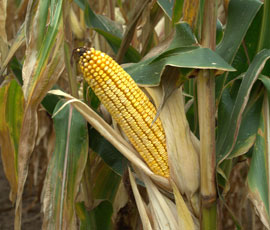France bans Monsanto GM maize amid US protests

A genetically-modified maize created by US biotech giant Monsanto has been temporarily banned by France “to protect the environment”.
France’s agricultural minister, Bruno Le Maire, imposed the temporary ban on maize MON810 on Friday (16 March), amid mass protests against Monsanto in its homeland country.
France, the EU’s largest grain grower, revived a ban put in place in 2008 and overturned by the country’s highest court in November on the basis that it was not sufficiently justified.
Monsanto had already said in January that it would not sell the maize in France as the market was “not ready”.
Mark Buckingham, spokesman for Monsanto UK, had said the company had no plans to sell MON 810 in France “unless both French farmers and the French government support sales”.
MON810, known by its trade name, YieldGard, has been genetically modified to produce toxins that kill insect pests that rob crop yield. However, some experts claim it can also be damaging for plants and animals.
In February, France, which is strongly opposed to genetically-modified organisms (GMOs), had asked the European Commission to suspend the authorisation to sow the maize due to potential risks to the environment.
The French agriculture ministry referred to a European Food Safety Authority (EFSA) study, which said threats linked to another GM crop, BT11, could also be associated with MON 810.
Five other EU countries – Germany, Greece, Austria, Luxemburg and Hungary – also ban MON810 cultivation.
Meanwhile, protests by Occupy Monsanto, a group who are opposed to the American biotech giant, are increasing their activity in the US.
On Friday, activists dressed in hazardous material suits held rallies in Washington DC to protest about alleged corrupt ties between American lawmakers and Monsanto.
Last year, GM crops were grown by about 16.7m farmers in 29 countries.
The area grown has increased steadily year-on-year, reaching about 160m hectares last year – an 8% increase in the number of farmers and the area grown since 2010.

